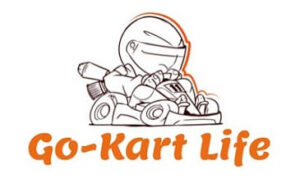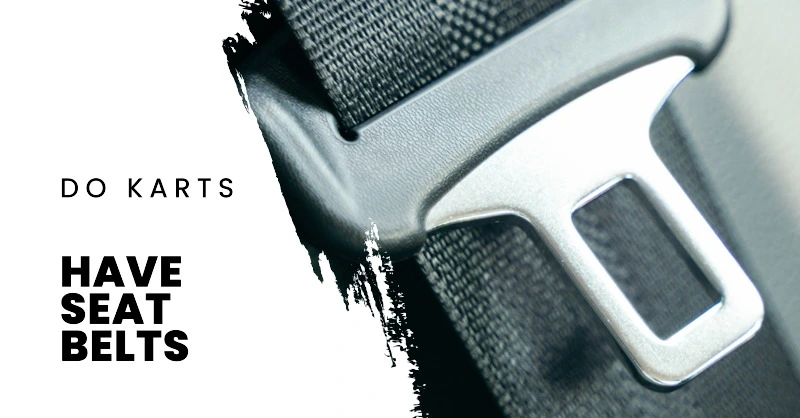Safety is essential in go-karting, and seat belts play a significant role in ensuring a safe ride. This article will explore seat belt usage in various go-kart types to help you understand when and where they’re used. By focusing on different kart types, we will provide you with reliable and valuable information to ensure a fun and safe go-karting experience.
| Key Takeaways |
|---|
| Racing go-karts often lack seat belts, with drivers relying on other safety measures like helmets, suits, and gloves. |
| Recreational and concession go-karts usually include seat belts, catering to a wider audience with diverse skill levels. |
| Off-road go-karts are more likely to have seat belts due to the increased risk of rollovers and accidents on rough terrain. |
| DIY go-kart seat belt usage depends on the builder's preferences and the intended purpose of the kart. |
| Prioritizing safety is essential, and drivers should wear appropriate safety gear such as helmets, suits, gloves, and neck braces in addition to using seat belts when available. |
Racing Go-Karts
Description of Racing Go-Karts
Racing go-karts are built for speed and performance. They are designed with lightweight materials, aerodynamic features, and powerful engines like the AlphaWorks engine to provide optimal performance on the track. Racers often participate in organized events or leagues, competing against others in their class.
Seat Belt Usage in Racing Karts
Unlike recreational karts, racing go-karts often lack seat belts. Instead, drivers rely on other safety measures like helmets, suits, and gloves. The absence of seat belts can be attributed to their potential to restrict movement, which could affect the driver’s ability to maneuver the kart effectively. Additionally, racing karts are designed to prevent rollovers with low centers of gravity, reducing the need for seat belts.
Recreational and Concession Go-Karts
Description of Recreational and Concession Go-Karts
Recreational and concession go-karts prioritize safety over performance, making seat belts a common feature. They cater to a wider audience, including kids and inexperienced drivers. These karts are typically found at karting rental facilities, amusement parks, and family entertainment centers like the ones listed in our article on the best places to ride go-karts. They are designed with user-friendly controls and safety features to accommodate various skill levels and ages.
Seat Belt Usage in Recreational and Concession Karts
Recreational and concession karts often include seat belts as safety equipment. These karts use simple lap belts or more complex harness systems. Lap belts are standard, while harness systems may be found in more advanced karts at commercial tracks. Seat belts in these karts help to keep the driver secure and reduce the risk of injury during collisions or sudden stops.
Off-Road and DIY Go-Karts
Description of Off-Road and DIY Go-Karts
Off-road go-karts are designed for rugged terrain, featuring more robust suspension systems, knobby tires, and higher ground clearance. They offer a unique driving experience and cater to outdoor enthusiasts. On the other hand, DIY go-karts are built by individuals using various components and designs, resulting in a wide range of performance capabilities and safety features.
Our guide on how to build a go-kart will help you get started on your DIY project.
Seat Belt Usage in Off-Road and DIY Karts
Seat belt usage in off-road and DIY go-karts varies depending on the design and intended use. Off-road karts are more likely to include seat belts. This is due to the increased risk of rollovers and accidents on rough terrain. On the other hand, DIY karts may or may not have seat belts. That depends on the builder’s preferences and the intended purpose of the kart. When building a DIY kart, it’s essential to prioritize safety by incorporating features like seat belts and other protective gear like helmets and suits.
Conclusion
Seat belt use in go-karts varies by kart type and purpose. Racing karts often lack seat belts, prioritizing performance and other safety gear. Recreational and concession karts usually have seat belts for diverse skill levels. Off-road karts feature seat belts for rough terrain. DIY go-kart seat belt usage depends on the builder’s choices and safety concerns.
Regardless of the type of go-kart you’re using, prioritizing safety is crucial. In addition to seat belts, drivers should wear appropriate safety gear such as helmets, suits, gloves, and neck braces. You can find more information on safety equipment in our articles about karting safety and go-karting safety equipment for youths. Understanding the importance of safety features like seat belts and staying informed about proper safety practices can ensure a fun and secure go-karting experience.

Goran, an experienced go-kart racer, fuels GoKartLife.com with his passion and expertise. He offers valuable insights and tips for fellow enthusiasts, fostering the growth of the go-kart community. Join Goran at GoKartLife.com and immerse yourself in this exhilarating sport.

